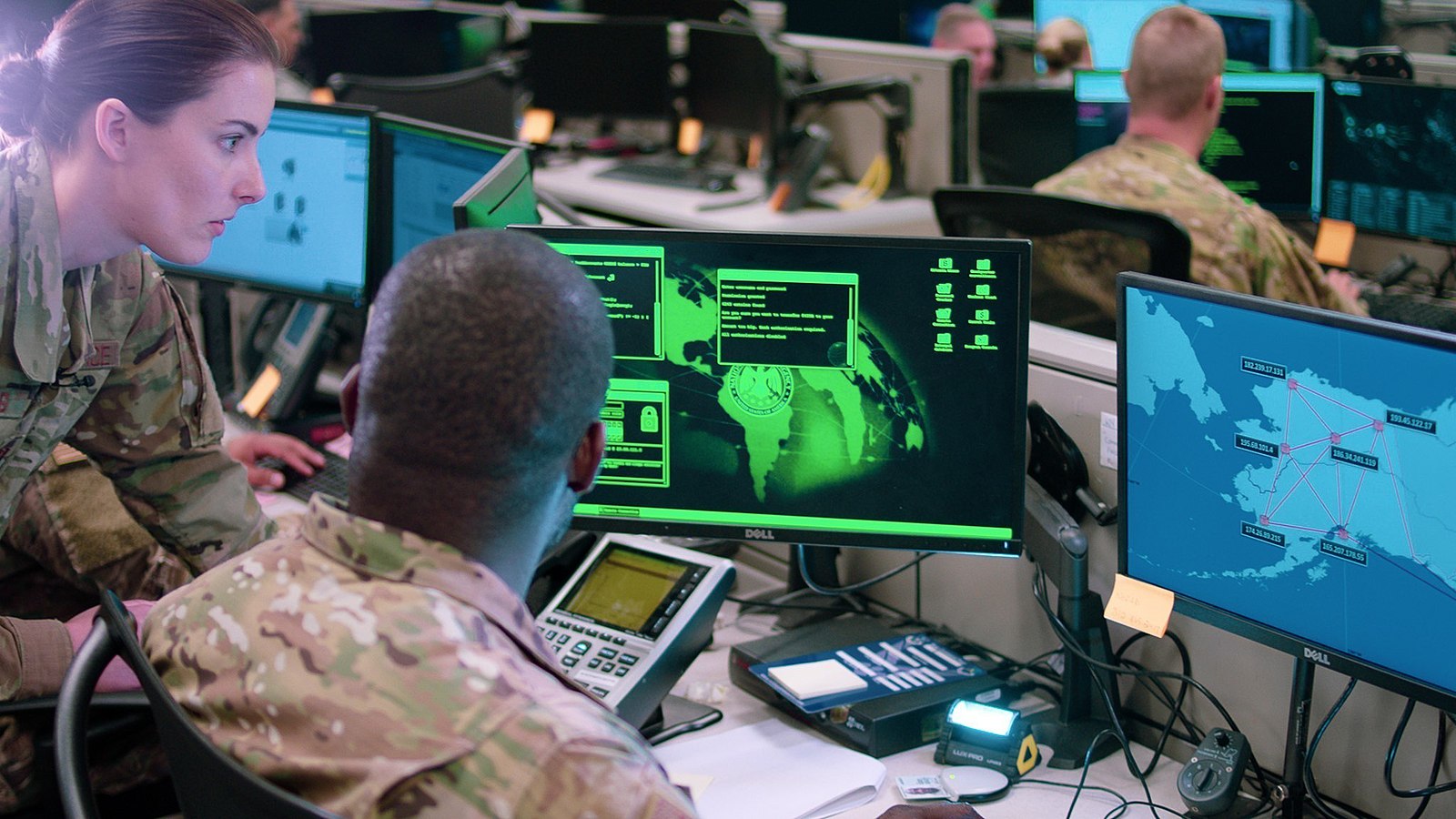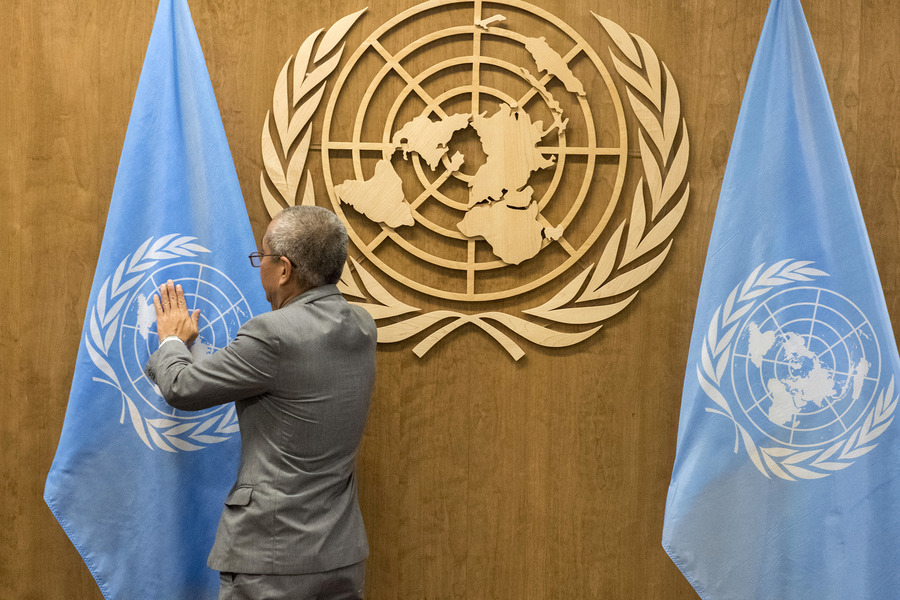The Subsea Sputnik Moment

Published by The Lawfare Institute
in Cooperation With

Editor’s Note: This piece was adapted from congressional testimony that Kevin Frazier delivered on Nov. 20. You can read his full testimony here.
Earlier this fall, China filled the streets of Beijing with its latest military technology. This recurring show of force generated its fair share of headlines and drew plenty of commentary about the capabilities of various new weapons systems. One innovation, however, was notably absent from the production: the AJX-002 undersea drone and other extra large uncrewed underwater vehicles (XLUUVs). These technologies represent a Sputnik moment for the undersea cable system that should spur Congress to enact overdue recommendations about how to protect the submarine cables that make modern life possible.
The spread of XLUUVs and their smaller counterparts–—UUVs—makes Hollywood-esque scenarios once regarded as “extremely difficult” something that all stakeholders must plan for. More specifically, it is now technologically feasible for a bad actor to launch a coordinated attack on dozens of cables—such as the 15 telecommunications cables that connect Taiwan to the rest of the world. That’s not a scenario most nations have mapped out nor prepared for.
The United States is not in a position to rapidly replace its own cables or assist its allies in doing the same. As it stands, it can take years to even approve a new cable in the U.S. If and when it is necessary to lay new cables, there is simply no regulatory path to do so. That’s why this precise moment merits a substantial overhaul of how the U.S. regulates and protects the undersea cable system.
Decades of Missed Opportunities for Reform
Decades of willful neglect by the U.S. government have calcified a fragmented, slow, and antiquated approach to laying, maintaining, and repairing undersea cables and safeguarding their cable landing stations both at home and wherever they land on the other side of the sea. The costs of this neglect are becoming clear. TeleGeography estimates that 15 maintenance ships will need to be replaced by 2040—and that’s simply to ensure the current repair capacity, which is arguably lacking (repairs sometimes take months due to a backlog of faults). To add to that list of to-dos, nearly 850,000 kilometers of cable will be retired over the same span. To meet the surging demand for bandwidth by hyperscalers like Google and Meta, there needs to be a surge in new cable development. Yet geopolitical chaos is already delaying efforts by Big Tech to lay the next generation of cables.
This was all foreseeable. About every 10 years, Congress and various agency committees seem to remember the importance of the undersea cable system. They recall that around 99 percent of all international data traffic flows through garden hose-sized cables on the ocean floor. They get reminded of the fact that diverting traffic through space is not a viable alternative. They are urged to take action.
In 2004, the Protective Security Division of the Department of Homeland Security (DHS) issued a report flagging numerous concerns. Cable landing stations were governed by a hodgepodge of local, state, and federal mandates. Natural hazards, intentional sabotage, and negligent actions by well-intentioned actors such as fishers all represented persistent threats. DHS hinted at a few straightforward policy suggestions: streamline permitting, increase communication across private and public stakeholders, and identify a lead government agency to handle this important policy issue.
Not longer after, in 2007, the U.S. received yet another sign that the subsea system was more fragile than some would hope. An earthquake near Taiwan severed cables that were carrying 90 percent of the region’s voice and data traffic. A shortage of cable repair ships and materials caused a significant delay in getting those cables up and running again. A proper response would have been a coordinated effort to increase the number of cable repair ships as well as to station them in cable choke areas, such as Taiwan. Yet that moment came and went.
In 2016, the Communications Security, Reliability and Interoperability Council (CSRIC) launched by the Federal Communications Commission was more detailed in both its enumeration of the problems facing submarine cable governance and its identification of the solutions. Across various reports, the CSRIC exposed how each aspect of the undersea cable system was in need of significant reform.
The council, for example, exposed how the complex and often conflicting set of state and federal laws around seafloor management heighten the risks of simultaneous breaks to several cables. Pursuant to its authority under the Submerged Lands Act of 1953, Florida mandates that no cables land on the Keys. Various federal laws, such as the National Marine Sanctuaries Act, effectively prohibit laying cables through protected natural areas. Geographic features render cable laying impossible in certain zones. The net result is more cables following similar, if not, identical routes. A high density of cables makes it easier for saboteurs to quickly break multiple cables or for a storm to do the same.
Now, in 2025, a litany of stakeholders are again echoing these and related concerns. Two subcommittees of the House Committee on Homeland Security recently held a hearing titled “Securing Global Communications: An Examination of Foreign Adversary Threats to Subsea Cable Infrastructure.” The witnesses (myself included) repeated much of what has already been offered as necessary policy steps. Timothy Stronge, Alex Botting, Matthew Kroenig, and I called for identifying a lead federal agency to oversee the undersea cable system. We likewise endorsed heightening the penalties under the Submarine Cable Act of 1888 for willfully or negligently breaking a cable in U.S. waters. We also called for greater investments by private and public stakeholders in cable laying and maintenance infrastructure. The level of accord across the panelists reflects the policy consensus that has emerged in this window.
All of these recommendations, if adopted, would mark significant progress in a domain that has been serially discussed but too infrequently acted upon. However, many of these proposals would merely cross off the things that the U.S. should have done decades ago. Congress must take additional action to meet this seabed Sputnik moment.
Policies for the New Threats to the Undersea Cable System
If yesterday’s threats—a predictable set of 100-150 breaks due to natural hazards and negligent fishers—mandated redundancy by way of laying more cables and launching new cable repair ships, then today’s threats—coordinated attacks on dozens of cables—require rapidity. The U.S. must design a system that moves at the speed of its adversaries. What this requires is somewhat hard to know because Congress and the relevant agencies have inadequately planned for such scenarios.
It’s time for a National Contingency Plan for the U.S. and its allies experiencing several cable breaks over a short period of time. Thankfully, there’s a model to follow. In 1968, following a massive oil spill off the coast of England, Congress set up the National Oil and Hazardous Substances Pollution Contingency Plan. The plan walks through how disparate private and public actors can work together to see the country through such incidents. Such a plan in the undersea cable domain is overdue. The XLUUVs will soon stalk our allies’ shores. By imagining the disruption such vehicles could cause, Congress and other stakeholders will be better able to update a sluggish regulatory framework. In other words, these exercises will reveal where current laws and rules fail to grant the proper actors the requisite authorities to ensure internet traffic continues to flow and that restoration efforts take a few weeks or perhaps a month—but certainly not any longer.
I’d recommend starting with an analysis of threats to Taiwan. The island has experienced abnormally high rates of cable breaks in recent years. And it’s no secret that China has contemplated isolating Taiwan from its economic and political allies. If China were to slice most, if not all, of the nation’s cables, it’s not clear how private and public U.S. actors could help provide temporary internet service via satellite support and contribute to the incredible physical task of bringing cables back on line. This is the sort of question we need to figure out. Participants in this exercise would also encounter questions of international law—such as whether cutting a cable qualifies as an act of war—that likewise merit further examination by U.S. stakeholders.
Other useful thought exercises include considering the possibility of an attack on Guam’s cables given its status as a U.S. territory and the military’s extensive presence there; attacks on cable landing stations in remote parts of Washington and Oregon also merit analysis. U.S. players must thoroughly walk through these exercises and catalog what legal and communication mechanisms are necessary to ensure a timely and effective response.
Second, armed with the information gleaned from these models, Congress must conduct a census of the myriad local, state, and federal laws that need to be amended, revoked, or preempted to realize the ideal response. My hunch is that this will return a number of shortcomings. Consider, for example, that California’s state-specific permitting process often takes upward of two years to complete. These and related measures—many of which are likely duplicative of what’s assessed by federal counterparts—are ripe for preemption.
Congress will also realize the supply chain for key undersea cable inputs is far more constrained than ideal. Most importantly, they’ll learn that SubCom—the main U.S. submarine cable company—has just six cable-laying ships. In the event that several cables need to be laid in short order, there’s a high probability that this limited number would become a key concern. These lessons can help inform future appropriations.
Third, Congress must go beyond merely catching up on deferred action. In the same way that China is investing heavily in research related to undersea tech, such as improvements in sensors and maneuverability of drones, the U.S. should facilitate and invest in similar inquiries. A private-public consortium akin to the Sematech project that brought together leading chip manufacturers to conduct basic research and share the results is worth emulating here. Google, Meta, Microsoft, and Amazon are the best candidates to kick-start an equivalent hub of inquiry into questions like quantum-resilient technologies, quantum sensing, and cable armoring materials that may shape the future of this domain. Because these companies must guarantee sufficient bandwidth for their artificial intelligence projects, they are the world’s most prolific cable layers. Consequently, they have a strong incentive to develop new technologies to keep expensive cables safe from novel threats, as well as to increase capacity for cables to carry more traffic.
Will Congress Meet the Moment?
The unveiling of the AJX-002 undersea drone should be viewed as a clear sign that the undersea cable system is under a new and pronounced kind of threat. For decades, U.S. governance has willfully allowed the fundamental infrastructure of the digital economy—submarine cables—to atrophy under an anachronistic and fragmented legal structure. This subsea Sputnik moment has escalated the stakes, requiring that Congress move past decades of inaction to aggressively defend the core democratic value of open, reliable global connectivity. This challenge demands an immediate focus on rapidity over mere redundancy, ensuring the legal and operational framework can meet adversarial speeds.
To this end, Congress should mandate and resource a National Contingency Plan, engaging in detailed modeling of complex scenarios like a simultaneous attack on Taiwan’s cables to pinpoint every bottleneck in the current permitting and response chain. The resulting intelligence should then drive a targeted legislative census to preempt state and local permitting processes that obstruct emergency repairs and new cable laying. Furthermore, securing this vital infrastructure requires a novel investment strategy: the formation of a public-private consortium with hyperscalers to accelerate research and development in cable protection and capacity.
Congress has exhausted the time for commissioned reports; the moment has arrived for decisive legal reform to guarantee the uninterrupted flow of global information. The cost of continued administrative inertia now equates directly to a geopolitical liability.

.png?sfvrsn=94f97f2c_3)



